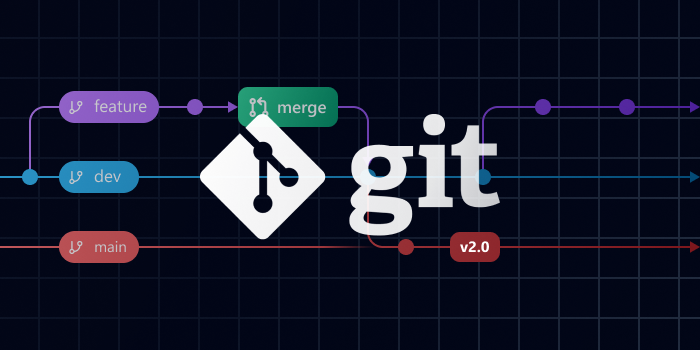Mastering Git Branching Strategies
 Ahammed Basha Shaik
Ahammed Basha Shaik
Introduction
In modern software development, Git branching strategies are the backbone of collaborative workflows, enabling teams to develop, test, and deploy features effectively. For DevOps practitioners, mastering Git branching strategies is indispensable for maintaining stability while delivering value at speed. Today, we delve into the essentials of Git branching strategies, their real-world applications, and best practices that set high-performing teams apart.
Understanding Git Branching Strategy
A Git branching strategy outlines how teams create, use, and merge branches within a repository. These strategies aim to streamline development, reduce conflicts, and enable timely delivery. Let's break it down:
Master/Main Branch:Reflects the production-ready version of the code. Stability is the priority.Feature Branches:Isolated environments for developing new features or enhancements.Release Branches:Used for testing and preparing a version for production.Hotfix Branches:Short-lived branches to address critical production issues swiftly.
Real-World Application: Kubernetes as an Example
Kubernetes, with thousands of contributors worldwide, demonstrates the power of an efficient branching strategy. Here's how:
Feature Branches: Enable teams to work independently on enhancements without disturbing the stable codebase.
Release Branches: Provide a testing ground for new versions, ensuring quality before deployment.
Hotfix Branches: Facilitate quick resolution of urgent bugs in production without affecting ongoing development.
Best Practices for Effective Git Branching
Keep It Simple: Avoid over-complicating your branching strategy. A clear structure minimizes confusion.
Consistent Merging Policies: Establish criteria for merging branches to maintain code quality.
Collaboration: Use pull requests and code reviews to ensure robust contributions.
Automation: Leverage CI/CD pipelines to test and validate branches before merging.
Documentation: Maintain clear documentation on branching policies for team-wide understanding.
Conclusion
Adopting a well-structured Git branching strategy is a game-changer for DevOps teams. It empowers developers to collaborate efficiently, ensures production stability, and accelerates feature delivery. By understanding these strategies, you're better equipped to tackle real-world challenges, whether in a collaborative project or a job interview setting.
Subscribe to my newsletter
Read articles from Ahammed Basha Shaik directly inside your inbox. Subscribe to the newsletter, and don't miss out.
Written by

Ahammed Basha Shaik
Ahammed Basha Shaik
💻 Aspiring DevOps Engineer | 🚀 Transitioning from Non-IT to Tech 🔧 Building expertise in DevOps tools: CI/CD, AWS, Kubernetes, Terraform, and Docker. 📘 Documenting my journey with the 100 Days of DevOps Challenge. ✨ Sharing my experiences, tips, and resources to inspire fellow learners. Hi, I’m Ahammed Basha, an aspiring DevOps Engineer passionate about building resilient systems and automating workflows. Coming from a non-IT background, I’ve embraced a steep learning curve and am currently on a 100 Days of DevOps Challenge. My focus areas include mastering cloud platforms like AWS and Azure, Infrastructure as Code with Terraform, and container orchestration using Kubernetes. Through my journey, I aim to share actionable insights, tools, and strategies that can help others kickstart their DevOps careers.